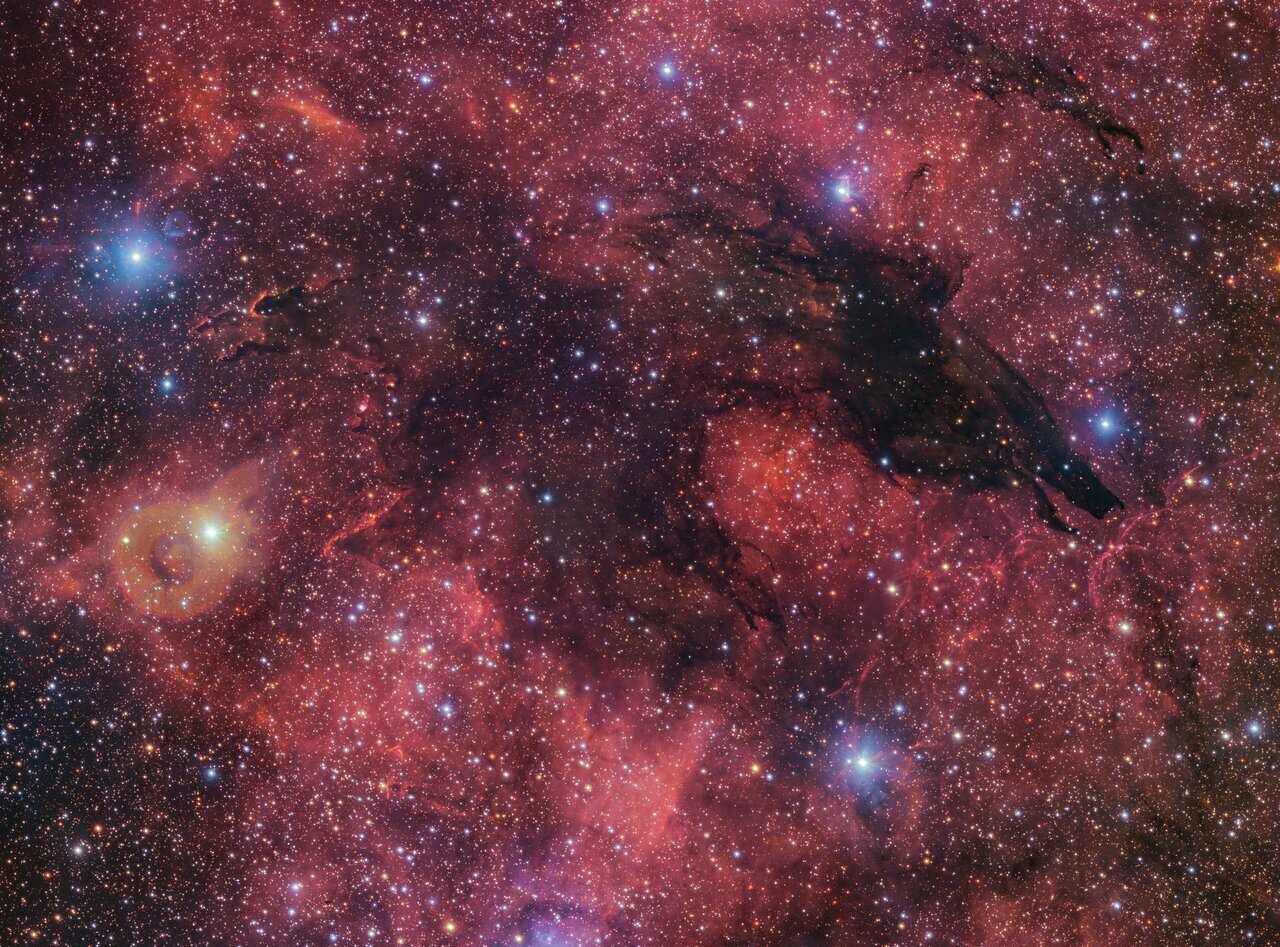European astronomers decided to celebrate Halloween in a rather unusual way. They took a closer look at a group of nebulae and found one among them that resembled a dark wolf.

Dark Wolf Nebula on Halloween
On Halloween, the European Southern Observatory (ESO) revealed this spooky image of a dark nebula that gives the illusion of a wolf silhouette against a colorful cosmic background. The nebula, named the Dark Wolf Nebula, was captured in a 283-million-pixel image by the VLT Survey Telescope at ESO’s Paranal Observatory in Chile.
The Dark Wolf Nebula is located in the constellation Scorpius, near the center of the Milky Way, at a distance of about 5,300 light-years from Earth. This image occupies an area in the sky equivalent to four full moons, but is actually part of an even larger nebula called Gum 55. If you look closely, the wolf might even be a werewolf, with hands ready to grab an unsuspecting passerby.
How do dark nebulae create the image of a wolf?
If you thought darkness equaled emptiness, think again. Dark nebulae are cold clouds of cosmic dust, which are so dense that they obscure the light of stars and other objects behind them. As the name indicates, they don’t emit visible light, unlike other nebulae. The dust particles inside them absorb visible light and only allow radiation with longer wavelengths, such as infrared light, to pass through. Astronomers study these frozen dust clouds because they often contain newly forming stars.
Of course, tracking the ghostly presence of the wolf in the sky is possible only because it contrasts with the bright background. This image shows in striking detail how the dark wolf stands out against the glowing star-forming clouds behind it. Colored clouds are composed mostly of hydrogen gas and glow with reddish tones, excited by the intense ultraviolet radiation from the newborn stars within them.
Dark Wolf imaging by telescopes
Some dark nebulae, such as the Coalsack Nebula, can be seen with the naked eye, and play a key role in the First Nations’ perception of the sky, but not the Dark Wolf. This image was created using data from the VLT viewing telescope, which belongs to the National Institute of Astrophysics in Italy (INAF) and is located at ESO’s Paranal Observatory in Chile’s Atacama Desert. The telescope is equipped with a specially designed camera to map the southern sky in visible light.
The image was composed of photos taken at different times, each with a filter that let in different colors of light. They were all taken during the VST Photometric Hα Survey of the Southern Galactic Plane and Bulge (VPHAS+), a survey of about 500 million objects in our Milky Way.
Such studies help scientists better understand the life cycle of stars in our home Galaxy, and the resulting data are made publicly available through ESO’s science portal. Explore this treasure trove of data for yourself: who knows what other creepy shapes you’ll find in the dark, scientists say.
Provided by phys.org


